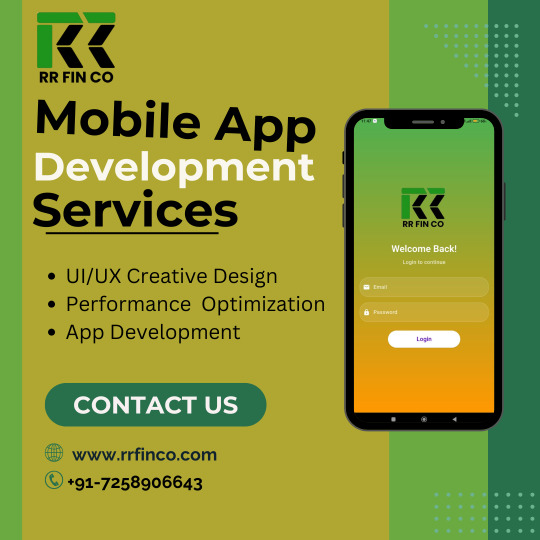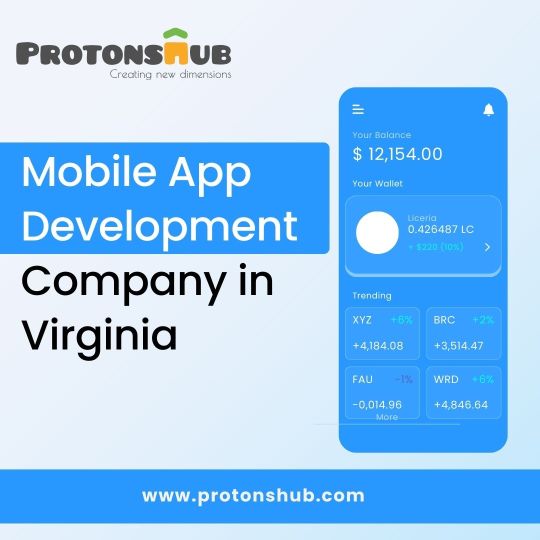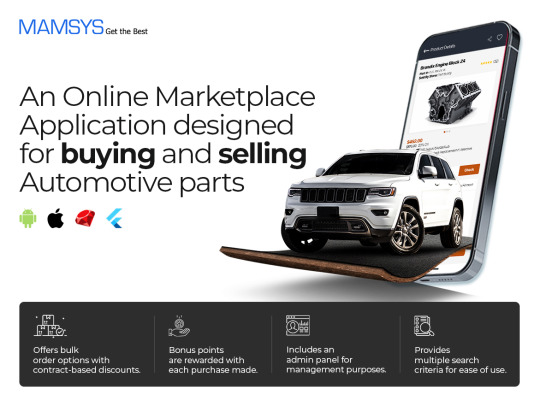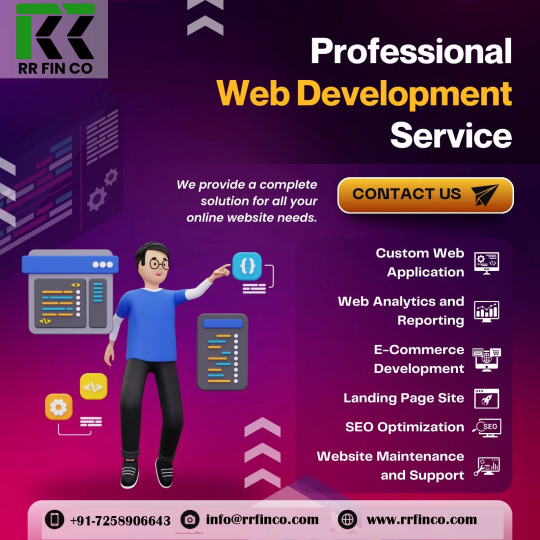#B2B mobile applications
Explore tagged Tumblr posts
Text
Mobile Application Development Company
RRFinCo is a leading mobile app development company in Patna, Bihar. that offers cutting-edge Mobile application development services Providing Company for Android and IOS devices. Call:- +91-7258906643

#gst services#recharge software#aeps software#api integration#account opening#loan service#dmt software#b2b service#api solution#b2c services#fintech solutions#fintech service#fintech industry#fintech software#mutual fund#mobile app design bd#mobile recharge#mobile app development#mlm software#white label solution#software company#e commerce software#gamming software#gaming#payment getway#payment getaway#b2b lead generation#ios app development#mobile application development#mobile app development company
0 notes
Text
eCommerce and marketplace platform for online business. Fully customizable for your business needs. Offering API integration with your ERP system, data management services, business listing and social media marketing for a fixed monthly price.
#ecommerce#marketplace#erp#online business#digital commisions#digital payments#drop shipping#construction#catalog#fashions#clothing#pos#order#quick commerce#headless commerce#b2b#b2c#d2c#mobile application development#iot#seo#smm#erp software#vyasaka#inevito
0 notes
Text
Driving Franchise Success with NetSuite Customer Portal | OpenTeQ Technologies
Franchise businesses face unique challenges in maintaining consistency efficiency and scalability across multiple locations. Leveraging a robust ERP system like NetSuite can streamline operations and fuel growth. This blog explores how NetSuite can empower franchise businesses through its comprehensive features, including the NetSuite Customer Portal, NetSuite Customization, NetSuite Mobile Apps, and NetSuite Data Migration.
Enhancing Customer Engagement with NetSuite Customer Portal
Effective customer engagement is crucial for franchise success. The NetSuite Customer Portal provides a centralized platform for customers to access information, make purchases, and receive support. This self-service portal enhances the customer experience by offering:
24/7 Access to Information: Customers can view their order history, track shipments, and update their profiles anytime, ensuring convenience and satisfaction.
Personalized Interactions: With data integration from various touchpoints, the portal can deliver personalized recommendations and offers, boosting customer loyalty.
Efficient Support: The portal allows customers to submit and track support tickets, leading to faster resolutions and improved customer service.
By providing a seamless and interactive customer portal, franchises can enhance customer retention and drive repeat business.
Tailoring Solutions with NetSuite Customization
Every franchise has unique operational needs. NetSuite Customization allows businesses to tailor the ERP system to their specific requirements. Customization options include:
Custom Workflows: Design workflows that align with your business processes, ensuring efficiency and reducing manual errors.
Tailored Dashboards: Create role-based dashboards that provide relevant insights and key performance indicators for different stakeholders within the franchise.
Personalized Reporting: Generate custom reports that highlight the metrics most important to your franchise, facilitating informed decision-making.
NetSuite's flexible customization capabilities ensure that franchise businesses can adapt the system to meet their precise needs, leading to improved operational efficiency and effectiveness.
Empowering Mobility with NetSuite Mobile Apps
In today’s fast-paced world, mobility is a game-changer. NetSuite Mobile Apps provide franchise managers and employees with on-the-go access to critical business information. Key benefits include:
Real-Time Access: Access real-time data on sales, inventory, and financials from anywhere, enabling quick decision-making.
Enhanced Productivity: Employees can manage tasks, approve transactions, and communicate with teams directly through mobile apps, increasing productivity.
Improved Customer Service: Field employees can access customer data and service history on the spot, providing better and faster customer service.
NetSuite Mobile Apps ensure that franchise operations remain agile and responsive, regardless of location.
Streamlining Operations with NetSuite Data Migration
Transitioning to a new ERP system can be daunting, but NetSuite Data Migration simplifies the process. Ensuring accurate and efficient data migration is critical for maintaining business continuity. Key aspects of NetSuite data migration include:
Data Cleansing: Cleanse and organize existing data to eliminate redundancies and inaccuracies, ensuring a smooth migration.
Secure Transfer: Utilize secure protocols to transfer data, maintaining its integrity and confidentiality.
Seamless Integration: Integrate data from various legacy systems into NetSuite, ensuring consistency and accessibility.
Efficient data migration minimizes disruptions and ensures that franchise businesses can quickly leverage NetSuite’s capabilities for enhanced operations.
Conclusion
OpenTeQ offers to franchise businesses a comprehensive NetSuite ERP solution that addresses their unique challenges. By utilizing the NetSuite Customer Portal, franchises can enhance customer engagement. Through NetSuite Customization, businesses can tailor the system to their specific needs. NetSuite Mobile Apps empower mobility and productivity, while NetSuite Data Migration ensures a seamless transition to the new ERP system. Together, these features enable franchise businesses to streamline operations, improve efficiency, and drive growth. Embrace NetSuite to transform your franchise business and stay ahead in the competitive market.
Reach out to OpenTeQ for expert NetSuite services tailored to your business needs. Contact Us: [email protected], +1-602 806 4634.
#NetSuite Customization#NetSuite CRM#NetSuite Customer Support & Customization#NetSuite Digital Portals#NetSuite B2B Portals#B2B Portals#NetSuite B2C Portals#B2C Portals#NetSuite Entity Portals#NetSuite Vendor Portal#NetSuite Supplier Portal#NetSuite Employees Portal#NetSuite Mobile Apps#NetSuite Mobile App Development#NetSuite Mobile App Services#NetSuite Application Development#NetSuite Mobile Applications
0 notes
Text
#Website Builder#Custom Web Development#TrueFirms#Web Development Services#E-commerce Platforms#Responsive Websites#Mobile Applications#B2B Staff Augmentation#truefirms
1 note
·
View note
Text

Mobile App Development Company in Virginia | Protonshub Technologies
Find the best Mobile Application Development Company in Virginia. Protonshub is one of the finest option for application development needs. They have experienced app developers that creates responsive mobile applications to fulfil your business needs.
#top app development company in virginia#mobile app development company in virginia#best app development company#top mobile app development company#best mobile app development company#virginia mobile app development company#app development services virginia#virginia app development#b2b application development virginia
0 notes
Text
Shopify - The World-Class E-Commerce Platform for Small and Medium Businesses
Shopify is a top e-commerce platform for small and medium businesses. It offers ready-made store templates, no coding required. The platform has a built-in payment system, accepts various payment methods, and ensures data security. Shopify provides free and paid add-on apps, marketing features like SEO, and analytics for targeted campaigns. It also has responsive web design and mobile shopping cart functionality.

Web Synergies offers expert Shopify services to enhance your brand. Their developers can integrate social media, drive traffic, and optimize functions for marketing, finance, sales, and more. Overall, Shopify is a powerful, user-friendly choice for launching an online business.
To learn more about Shopify and how Web Synergies can assist you, visit the following link:- Click Here
1 note
·
View note
Text
#technology#appdevelopment#development#developers#application#software#mobileappdevelopment#mobileappdevelopers#mobile app developer company#mobile app developers#mobileappdesign#b2b#AI#ai software development company#AR/VR development
0 notes
Text

Check out the project by @Mamsys - A mobile app for the #B2B #automarket.
Our app simplifies buying and selling automobile parts through a free-to-use platform, making B2B transactions and bulk ordering quick, secure, and hassle-free.
Contact us at https://www.mamsys.com/contact-us/ for more information on our #autoindustry related #applications and business solutions.
3 notes
·
View notes
Text
Saas
What is SaaS? SaaS, or software-as-a-service, is application software hosted on the cloud and used over an internet connection via a web browser, mobile app or thin client. The SaaS provider is responsible for operating, managing and maintaining the software and the infrastructure on which it runs. The customer simply creates an account, pays a fee, and gets to work. How SaaS works SaaS takes advantage of cloud computing infrastructure and economies of scale to provide customers a more streamlined approach to adopting, using and paying for software. All SaaS applications share the following characteristics: - SaaS applications are built to be hosted on the clouds - SaaS applications are accessible to any customer with an internet connection and an internet-connected end-user device (e.g. a computer, mobile phone or tablet). - Perhaps most important, SaaS applications require little to no management and zero maintenance from the customer. Benefits of SaaS The benefits and advantages of SaaS are best understood in comparison to traditional software - software installed and managed on on-premises infrastructure: - SaaS provides faster—even instant—adoption and time-to-benefit. - SaaS provides access to new features and versions as soon as they’re available. - SaaS enables cost-effective, on-demand scalability. - SaaS offers predictable costs and dramatically lower overhead. - SAAS security and privacy a. encryption and key management; b. identity and access management (IAM); c. security monitoring; d. incident response; e. poor integration into broader, company-specific security environments; f. fulfillment of data residency requirements; g. data privacy; h. cost of investing in third-party tools to offset the SaaS security risk; i. lack of communication with technical and security experts during the sales process. SaaS products may be primarily marketed to B2B, B2C markets or both. Examples of popular SaaS products include: Salesforce Google Workspace apps Microsoft 365 HubSpot Trello Netflix Zoom Zendesk DocuSign Slack Adobe Creative Cloud Shopify Mailchimp.
1 note
·
View note
Text
Software Development Company
Find a curated list of the best custom Software Development Companies in India on RRFINCO! Pick the right partner based on rates, client reviews & more. Trusted IT Software Development Company in Bihar, Patna.

#aeps #appserviceprovider #aepsservice #top10aepsservice #fintech #fintechservice #softwarecompany #rechargesoftware #dmt #bbps #billpayment #pancard #giftcard #fasttag #insurance #dthrecharge #mobilerecharge #whitelabelSoftware #b2bsoftware #resellersoftware #b2bservice #whitelabelservice #mobileapplication #gameapplication #loan #DematAccountOpening #PayLICpremium #softwarecompany #websitecompany #softwaredevelopmentCompany #fintechsoftware #b2bsoftware #whitelabelsoftware #mlmsoftware #mlmsoftwaredevelopment #b2bsoftwaredevelopment #fintechsoftwaredevelopment #AePS #dmt #aepsservice #apes #upi #loan #loanservices #Payment #paymentgateway #eGoverment #travels #insurance #insurancecoverage #DTHrecharge #mobilerecharge #billpayments #Adharpay #paymentgateway #paymentsolutions #CMS #HotelBookings #ticketbookings #API
#aeps software#account opening#gst services#recharge software#loan service#b2b service#api solution#dmt software#api integration#b2c services#fintech software#software company#mlm software#e commerce software#fintech solutions#fintech service#fintech app development company#fintech industry#mobile app development#mobile app design bd#mobile application development#mobile app developers#digital marketing
0 notes
Text
Next Big Technology: A Leading Name Among Top App Development Companies
In the ever-evolving digital landscape, mobile applications have become the backbone of business success. With increasing demand, finding the right development partner is crucial. Next Big Technology (NBT) has established itself as a leading name among top app development companies, delivering innovative, user-centric, and result-driven mobile solutions for businesses worldwide.
Why Choose Next Big Technology?
As one of the top app development companies, Next Big Technology specializes in creating scalable, high-performance, and secure mobile applications tailored to meet diverse business needs. Here’s why NBT stands out:
Expertise Across Platforms
Proficient in iOS, Android, and Cross-Platform app development.
Expertise in using the latest frameworks like React Native, Flutter, and Xamarin.
Custom App Development Solutions
Tailor-made applications to meet specific business requirements.
Seamless integration with existing business infrastructure.
Innovative & Future-Ready Approach
AI & ML integration to enhance user experience.
AR/VR-enabled applications for interactive engagement.
IoT applications to connect devices seamlessly.
Robust Security & Compliance
Compliance with industry standards like GDPR, HIPAA, and PCI DSS.
End-to-end encryption and advanced security measures.
Services Offered by Next Big Technology
Being a reputed name in the top app development companies, Next Big Technology provides a wide range of app development services, including:
1. Mobile App Development
Native App Development (iOS & Android)
Hybrid App Development (React Native, Flutter, Ionic)
Progressive Web Apps (PWA)
2. Enterprise App Development
Business automation and process management applications.
Scalable solutions for enterprise needs.
3. E-commerce App Development
B2B & B2C eCommerce apps
Multi-vendor marketplace development
4. Game Development
2D & 3D game development
Unity & Unreal Engine-based game applications
5. On-Demand App Development
Ride-hailing, food delivery, healthcare, and home services apps
6. Web App Development
Custom web apps tailored to specific business needs.
Integration with mobile platforms for seamless user experience.
The Process Behind Next Big Technology’s Success
NBT follows a structured and agile approach to app development, ensuring high quality and efficiency:
Requirement Gathering & Analysis
Understanding business goals and user expectations.
Detailed documentation of project scope.
UI/UX Design
Crafting visually appealing and intuitive app designs.
Wireframing and prototyping for a seamless user experience.
Development & Testing
Agile development methodology to ensure flexibility.
Rigorous testing to eliminate bugs and ensure security.
Deployment & Maintenance
Launching applications on Google Play Store and Apple App Store.
Regular updates and maintenance for optimal performance.
Industries Served
NBT serves a variety of industries, making it one of the top app development companies catering to multiple sectors, including:
Healthcare & Fitness
E-commerce & Retail
Finance & Banking
Real Estate
Travel & Hospitality
Education & E-learning
Media & Entertainment
Conclusion
Choosing Next Big Technology means partnering with one of the top app development companies committed to delivering excellence. Whether you need a simple mobile app or a complex enterprise solution, NBT has the expertise and innovation to bring your vision to life.
0 notes
Text
Accelerating FMCG Industry Growth with NetSuite Customization | OpenTeQ
Fast Moving Consumer Goods (FMCG) industry is characterized by rapid turnover and high consumer demand. To maintain a competitive edge in this dynamic market, companies must streamline operations, enhance customer experiences, and leverage technology. One powerful solution that has proven to be a game-changer for FMCG businesses is NetSuite. By utilizing tools like NetSuite Mobile Apps, NetSuite Customer Portal, and NetSuite B2C Portals, and investing in NetSuite Customization, FMCG companies can drive significant growth and efficiency.
Enhancing Operational Efficiency with NetSuite Mobile Apps
In the FMCG industry, speed and efficiency are crucial. NetSuite Mobile Apps offer a comprehensive solution to manage various aspects of the business on the go. Whether it’s tracking inventory, managing sales, or overseeing supply chain logistics, these mobile apps provide real-time data access and actionable insights. This level of mobility ensures that decision-makers can respond swiftly to market changes, ultimately enhancing operational efficiency.
NetSuite Mobile Apps allow sales teams to access customer information, place orders, and check inventory levels from anywhere. This mobility reduces the lag time between order placement and fulfillment, leading to faster delivery times and improved customer satisfaction. For an industry where every minute counts, this agility can translate into a significant competitive advantage.
Empowering Customers through the NetSuite Customer Portal
Customer satisfaction and loyalty are paramount in the FMCG sector. The NetSuite Customer Portal offers a seamless and personalized experience for customers, enabling them to interact with the brand more effectively. Through the portal, customers can place orders, track shipments, and access support services effortlessly.
The NetSuite Customer Portal provides a transparent platform where customers can view their purchase history, receive updates on new products, and engage with customer service representatives. This level of engagement fosters trust and loyalty, encouraging repeat business. By leveraging this tool, FMCG companies can enhance the overall customer experience, driving higher satisfaction rates and stronger customer relationships.
Expanding Reach with NetSuite B2C Portals
As the FMCG industry continues to evolve, the importance of a robust online presence cannot be overstated. NetSuite B2C Portals enable businesses to establish and manage their online stores efficiently. These portals are designed to handle the complexities of B2C transactions, offering features such as secure payment processing, personalized shopping experiences, and robust customer support.
NetSuite B2C Portals integrate seamlessly with other NetSuite applications, providing a unified view of customer data and sales metrics. This integration allows FMCG companies to offer a cohesive and streamlined shopping experience, from browsing products to completing transactions. By expanding their reach through online channels, FMCG businesses can tap into new markets and boost their sales potential.
Tailoring Solutions with NetSuite Customization
Every FMCG company has unique needs and challenges. NetSuite Customization offers the flexibility to tailor the platform to meet specific business requirements. Whether it’s customizing workflows, creating bespoke reports, or integrating third-party applications, NetSuite allows for extensive customization to support diverse business processes.
Through NetSuite Customization, FMCG companies can optimize their operations and achieve greater efficiency. For example, customizing inventory management processes can help reduce waste and ensure optimal stock levels. Similarly, tailored financial reporting can provide deeper insights into profitability and cost management. By aligning NetSuite with their unique business needs, FMCG companies can drive operational excellence and sustainable growth.
Conclusion
NetSuite is a powerful tool for FMCG companies looking to accelerate growth and enhance operational efficiency offered by OpenTeQ Technologies. By leveraging NetSuite Mobile Apps, NetSuite Customer Portal, NetSuite B2C Portals, and NetSuite Customization, businesses can streamline their processes, improve customer satisfaction, and expand their market reach. In an industry where speed and customer experience are critical, NetSuite offers the capabilities needed to stay ahead of the competition and achieve long-term success.
Reach out to OpenTeQ for expert NetSuite services tailored to your business needs. Contact Us: [email protected], +1-602 806 4634.
#NetSuite Customization#NetSuite CRM#NetSuite Customer Support & Customization#NetSuite Digital Portals#NetSuite B2B Portals#B2B Portals#NetSuite B2C Portals#B2C Portals#NetSuite Entity Portals#NetSuite Customer Portal#NetSuite Vendor Portal#NetSuite Supplier Portal#NetSuite Employees Portal#NetSuite Mobile Apps#NetSuite Mobile App Development#NetSuite Mobile App Services#NetSuite Application Development#NetSuite Mobile Applications
0 notes
Text
E-Laundry & Clean: Premier Laundry Management Software in Kolkata
E-Laundry & Clean offers a comprehensive solution for managing laundry and dry-cleaning businesses in Kolkata. Our software is designed to streamline operations, enhance efficiency, and improve customer satisfaction. Key features include:
Integrated System: Supports all devices with barcode generation for individual garments, facilitating seamless management of single or multiple stores.
Web and Mobile Applications: Provides premium applications for both riders and customers, ensuring fast and efficient delivery services.
Secure Payments: Enables secure online transactions through UPI, Paytm wallet, debit/credit cards, and net banking.
Reporting Management: Generates comprehensive reports with a single click, offering complete authorization features for accessibility.
Home Pickup and Delivery: Connects riders with stores via the customer mobile application, facilitating instant notifications for order bookings and deliveries.
B2C and B2B Fitment: Offers a single solution for both business-to-customer and business-to-business models, including single or batch invoice generation for institutional customers.
Experience a smart solution tailored for every laundry and dry-cleaning business. Manage single or multiple stores with ease, and provide your customers with exceptional service through our innovative platform.
For more information, visit our website: E-Laundry Software
0 notes
Text
India, Brazil, and Saudi Arabia are the new opportunity grounds for Humanoid Robot market players
According to a recent research, Industry revenue for Humanoid Robot is expected to rise to $40.7 billion by 2035 from $3.6 billion of 2023. U.S., Japan and Germany are the top 3 markets and combinely holds substantial demand share. The revenue growth of market players in these countries is expected to range between 21.5% and 31.4% annually for period 2024 to 2035.
Industry transition including transition to ai-driven robots and shift towards collaborative robots, are transforming the supply chain of Humanoid Robot market. As the spotlight shifts towards AI humanoid robots are evolving from simple aids to sophisticated systems that can independently make decisions.The progress in technology enables robots to tackle assignments, like adapting to real time fluctuations adeptly.
Check detailed report here - https://datastringconsulting.com/industry-analysis/humanoid-robot-market-research-report
Research Study addresses the market dynamics including opportunities, competition analysis, industry insights for Design Type (Bipedal, Wheeled), Application (Healthcare, Education, Defense, Entertainment, Personal Assistance, Industrial) and undefined ().
Industry Leadership and Strategies
Companies such as SoftBank Robotics, Hanson Robotics, Boston Dynamics, UBTECH Robotics, Agility Robotics, Honda Motor Co, Toyota Research Institute, PAL Robotics, Samsung Electronics, ABB Robotics, KUKA Robotics and Robotis are well placed in the market. Below table summarize the strategies employed by these players within the eco-system.
Application Area
Leading Providers
Provider Strategies
Healthcare Assistance
SoftBank Robotics, Hanson Robotics
AI-driven patient interaction, therapy assistance
Industrial Automation
Boston Dynamics, ABB Robotics
Enhanced mobility, adaptive learning for dynamic environments
Education
UBTECH Robotics, PAL Robotics
Interactive learning modules, advanced speech recognition
Evolving & Shifting Regional Markets
North America and Asia-Pacific are the two most active and leading regions in the market. With different regional dynamics and industry challenges like high development costs, technical limitations and ethical concerns; market supply chain from component supplier to end user is expected to evolve & expand further, especially within emerging markets
The market in emerging countries is expected to expand substantially between 2024 and 2030, supported by market drivers such as technological advancements in ai and robotics, increasing demand for automation, and growing use in healthcare.
About DataString Consulting
DataString Consulting assist companies in strategy formulations & roadmap creation including TAM expansion, revenue diversification strategies and venturing into new markets; by offering in depth insights into developing trends and competitor landscapes as well as customer demographics. Our customized & direct strategies, filters industry noises into new opportunities; and reduces the effective connect time between products and its market niche.
DataString Consulting offers complete range of market research and business intelligence solutions for both B2C and B2B markets all under one roof. DataString’s leadership team has more than 30 years of combined experience in Market & business research and strategy advisory across the world. Our Industry experts and data aggregators continuously track & monitor high growth segments within more than 15 industries and 60 sub-industries.
https://datastringconsulting.com/downloadsample/zirconium-carbonate-market-research-report
0 notes